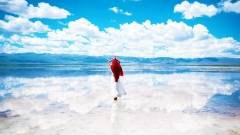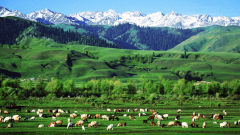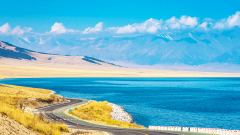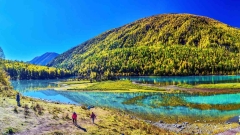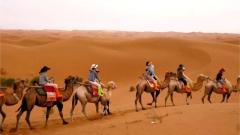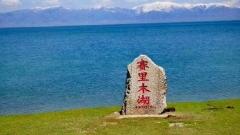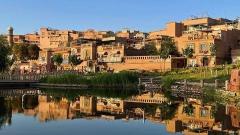Xinjiang, with its vast deserts, snow-capped mountains, and high-altitude grasslands, is a dream destination for many travelers. Yet, its extreme climate can pose challenges—intense sunlight, sudden drops in temperature, and dry air are all part of the journey. To enjoy Xinjiang’s beauty without discomfort, mastering three essentials—sun protection, cold resistance, and dryness prevention—is a must.
1. Understanding Xinjiang’s Unique Climate
Xinjiang is the largest province in China, spanning deserts like the Taklamakan, grasslands in Yili, and glaciers in the Tianshan Mountains. This vastness results in dramatic climate variations:
-
Sunlight: The region receives over 2500 hours of sunshine annually, making UV radiation strong even in spring and autumn.
-
Temperature Differences: Day-to-night temperature swings are significant, especially in desert and plateau areas. It can be 30°C during the day and close to freezing at night.
-
Dryness: Xinjiang is inland with low humidity. Whether you are in Urumqi, Kashgar, or Altay, the air often feels dry, affecting skin and respiratory health.
These conditions explain why sun protection, warmth, and hydration are essential parts of travel preparation.
2. Sun Protection: Shielding Yourself in the Land of Strong UV
Why It Matters
Xinjiang’s high altitude in places like Kashgar or Hemu increases UV intensity. Long sunshine hours mean even short outdoor strolls can lead to sunburn or skin damage.
Practical Tips
-
Sunscreen: Choose SPF 30+ for daily use, SPF 50+ for long outdoor activities. Apply 20 minutes before going out and reapply every 2–3 hours.
-
Protective Clothing: Light, breathable long-sleeved shirts, wide-brimmed hats, and UV-protective sunglasses are highly recommended.
-
Face Masks & Scarves: In desert areas like Turpan or Taklamakan, scarves can protect both from sun and sandstorms.
-
Lip Protection: Don’t forget SPF lip balm, as lips are vulnerable to both dryness and sun exposure.
Best Seasons to Pay Attention
-
Summer (June–August): Strongest UV radiation, especially at midday.
-
Autumn (September–October): Cooler temperatures may trick travelers into ignoring sunscreen, but UV levels remain high.
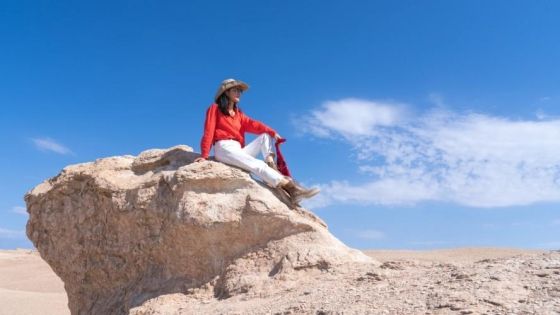
Xinjiang Hami Yadan Ghost City
3. Cold Protection: Coping with Temperature Drops
Why It Matters
Xinjiang’s daily temperature difference can be extreme. In places like Hemu or Kanas, autumn mornings may feel like winter, while afternoons are mild. Desert regions can reach scorching heat during the day and near-freezing at night.
Practical Tips
-
Layering: Dress in layers—base layer (quick-dry fabric), mid-layer (fleece or wool), and outer layer (windproof jacket). This allows flexibility as temperatures shift.
-
Head and Hands: A wool hat and gloves help maintain warmth in high-altitude or evening conditions.
-
Shoes: Waterproof hiking boots with thick socks are ideal for both mountain treks and sudden weather changes.
-
Emergency Gear: For travelers going to remote areas like Pamir Plateau or Altay, carry a thermal blanket or down jacket.
Where It’s Most Important
-
Autumn and Winter in Northern Xinjiang: Hemu, Kanas, and Altay can feel very cold after sunset.
-
Spring Nights in Desert Regions: Even in April or May, Turpan nights can be chilly.
-
High-Altitude Trekking: Areas like Tianshan or Karakoram range require careful preparation.
4. Dryness Protection: Combating Arid Air
Why It Matters
Xinjiang’s dry climate is notorious for causing cracked lips, rough skin, and even nosebleeds. Combined with strong sun and wind, dryness can become uncomfortable for unprepared travelers.
Practical Tips
-
Hydration: Carry a reusable water bottle and drink regularly, even if you don’t feel thirsty. Herbal teas are also popular among locals for hydration.
-
Moisturizers: Use rich creams or lotions, ideally with ingredients like glycerin or shea butter, to lock in moisture.
-
Lip Care: Apply lip balm frequently. Consider one with beeswax or vitamin E for extra protection.
-
Masks: Wearing a lightweight mask or scarf can reduce direct airflow and retain humidity around the nose and mouth.
-
Diet: Eat hydrating fruits like watermelon and grapes. Local dairy products such as yogurt also help balance dryness.
Extra Tips: Travelers to southern Xinjiang (Kashgar, Hotan, Turpan) often experience the driest air—plan accordingly with stronger moisturizers and frequent water intake.
5. Packing Checklist for Xinjiang
To combine sun, cold, and dryness prevention, here’s a quick list:
-
Sunscreen (SPF 50+) & SPF lip balm
-
Wide-brim hat, sunglasses, light long-sleeved shirt
-
Fleece jacket, windproof coat, warm hat, gloves
-
Hiking boots, thick socks
-
Water bottle, moisturizer, hand cream, nasal spray
-
Scarf or mask for sun, sand, or wind protection
This list ensures comfort across Xinjiang’s diverse terrains, whether exploring Urumqi’s cityscape, hiking in Kanas, or riding camels in the desert.
6. Combining Protection with Travel Experiences
-
Kanas & Hemu in Autumn: Admire golden birch forests but bring warm jackets and moisturizers.
-
Taklamakan Desert: Prepare for hot sun during the day, cold nights, and dry air with layered clothing and hydration.
-
Turpan: Famous for grapes and hot weather—sun protection and hydration are key.
-
Tianshan Mountains: Expect unpredictable weather; bring both sun protection and thermal clothing.
By anticipating the climate, you won’t just survive Xinjiang—you’ll enjoy it to the fullest.
Conclusion
Traveling through Xinjiang is like moving across several worlds in one journey—deserts, grasslands, mountains, and oases. The landscapes are breathtaking, but the climate demands respect. By preparing for sun, cold, and dryness, you can travel confidently and comfortably. With the right protection, your Xinjiang trip will be less about discomfort and more about unforgettable memories.



